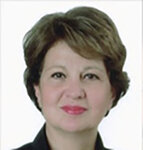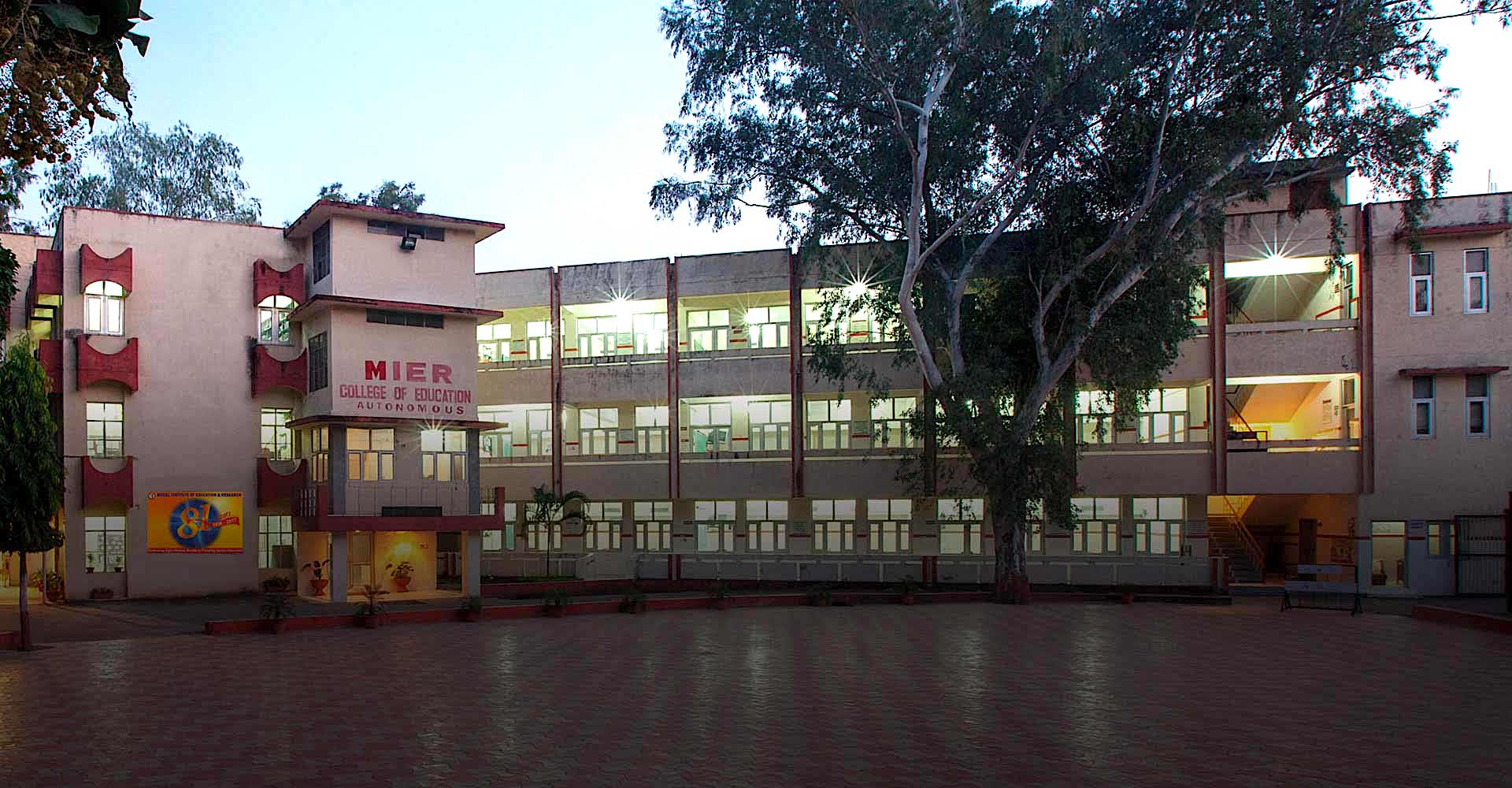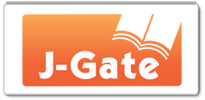Bibliometric Analysis of Concept Maps in Chemistry Education
DOI:
https://doi.org/10.52634/mier/2023/v13/i1/2435Keywords:
Concept Maps, Chemistry Education, Bibliometric Analysis, Systematic Review, WoS databaseAbstract
A comprehensive systematic review concerning the usage of concept maps in chemistry education (CMiCE) is not available in the literature. Therefore, this study attempts to conduct a systematic review of CMiCE using bibliometric analysis. Within the scope of the main aim of the study, articles related to CMiCE were searched on the Web of Science (WoS) database through the “ALL= (“concept* map*”) and ALL=(“chem*”) query. Data analysis was done using Microsoft Excel, VOSviewer software package and WoS analytical tool. According to the findings, information regarding trends, citation, co-authorship, co-word/co-occurrence, and co-citation in studies related to CMiCE were obtained. Results show that the most influential country was the USA, the most influential journal was the Journal of Chemical Education, the author with most citations was Novak, the most frequently used keyword was concept maps and the most commonly used keyword in recent years was the curriculum. The results from this study will contribute to other review studies related to CMiCE- especially in the context of chemistry education.
Downloads
Metrics
Downloads
Published
How to Cite
Issue
Section
License

This work is licensed under a Creative Commons Attribution 4.0 International License.
The articles published in the MIER Journal of Educational Studies, Trends and Practics (MJESTP) are distributed under the terms of the Creative Commons Attribution License (CC BY 4.0), which permits unrestricted use, distribution, and reproduction in any medium, provided the original author and source are credited.
- Copyright on any open access article in the MIER Journal of Educational Studies, Trends and Practics (MJESTP) published by Model Institute of Education and Research (MIER) is retained by the author(s).
- Author(s) grant MIER a license to publish the article and identify himself/herself/themselves as the original publisher.
- Authors also grant any third party the right to use the article freely as long as its integrity is maintained and its original authors, citation details and publisher are identified.
- The Creative Commons Attribution License 4.0 formalizes these and other terms and conditions of publishing articles.
References
Alt, D., Weinberger, A., Heinrichs, K., & Naamati-Schneider, L. (2022). The role of goal orientations and learning approaches in explaining digital concept mapping utilization in problem-based learning. Current Psychology [Advance online publication], 1–16. https://doi.org/10.1007/s12144-021-02613-7
Anzovino, M. E., & Bretz, S. L. (2016). Organic chemistry students' fragmented ideas about the structure and function of nucleophiles and electrophiles: A concept map analysis. Chemistry Education Research and Practice, 17(4), 1019–1029. https://doi.org/10.1039/C6RP00111D
Aydin, S., Aydemir, N., Boz, Y., Cetin-Dindar, A., & Bektas, O. (2009). The contribution of constructivist instruction accompanied by concept mapping in enhancing pre-service chemistry teachers' conceptual understanding of chemistry in the laboratory course. Journal of Science Education and Technology, 18(6), 518–534. https://doi.org/10.1007/s10956-009-9167-1
Babincakova, M., Ganajova, M., Sotakova, I., & Bernard, P. (2020). Influence of formative assessment classroom techniques (Facts) on student's outcomes in chemistry at secondary school. Journal of Baltic Science Education, 19(1), 36–49. https://doi.org/10.33225/jbse/20.19.36
Brandt, L., Elen, J., Hellemans, J., Heerman, L., Couwenberg, I., Volckaert, L., & Morisse, H. (2001). The impact of concept mapping and visualization on the learning of secondary school chemistry students. International Journal of Science Education, 23(12), 1303–1313. https://doi.org/10.1080/09500690110049088
Burrows, N. L., & Mooring, S. R. (2015). Using concept mapping to uncover students' knowledge structures of chemical bonding concepts. Chemistry Education Research and Practice, 16(1), 53–66. https://doi.org/10.1039/C4RP00180J
Cakiroglu, U., Atabas, S., Aydin, M., & Ozyilmaz, I. (2022). Creating concept maps with augmented reality: A case of eclipse of the lunar and solar topic. Research and Practice in Technology Enhanced Learning, 17(1), 1–22. https://doi.org/10.1186/s41039-022-00191-1
Chang, C. C., Hwang, G. J., & Tu, Y. F. (2022). Roles, applications, and trends of concept map-supported learning: A systematic review and bibliometric analysis of publications from 1992 to 2020 in selected educational technology journals. Interactive Learning Environments, 1–22. https://doi.org/10.1080/10494820.2022.2027457
Chang, C. Y., & Yang, J. C. (2022). Concept mapping in computer-supported learning environments: A bibliometric analysis. Interactive Learning Environments, 1–18. https://doi.org/10.1080/10494820.2022.2043385
Chen, J., Ye, X., Chen, M., & Liang, Y. (2019). Bibliometric analysis of the papers on urban education. Library Hi Tech, 37(4), 894–905. https://doi.org/10.1108/LHT-01-2019-0009
Djeki, E., Degila, J., Bondiombouy, C., & Alhassan, M. H. (2022). E-learning bibliometric analysis from 2015 to 2020. Journal of Computers in Education [Advance online publication], 9(4), 727–754. https://doi.org/10.1007/s40692-021-00218-4
Donthu, N., Kumar, S., Mukherjee, D., Pandey, N., & Lim, W. M. (2021). How to conduct a bibliometric analysis: An overview and guidelines. Journal of Business Research, 133, 285–296. https://doi.org/10.1016/j.jbusres.2021.04.070
Ellegaard, O., & Wallin, J. A. (2015). The bibliometric analysis of scholarly production: How great is the impact? Scientometrics, 105(3), 1809–1831. https://doi.org/10.1007/s11192-015-1645-z
Esen, M., Bellibas, M. S., & Gumus, S. (2020). The evolution of leadership research in higher education for two decades (1995–2014): A bibliometric and content analysis. International Journal of Leadership in Education, 23(3), 259–273. https://doi.org/10.1080/13603124.2018.1508753
Eshuis, E. H., ter Vrugte, J., & de Jong, T. (2022). Supporting reflection to improve learning from self-generated concept maps. Metacognition and Learning [Advance online publication], 17(3), 691–713. https://doi.org/10.1007/s11409-022-09299-7
Francisco, J. S., Nakhleh, M. B., Nurrenbern, S. C., & Miller, M. L. (2002). Assessing student understanding of general chemistry with concept mapping. Journal of Chemical Education, 79(2), 248–257. https://doi.org/10.1021/ed079p248
Ganajova, M., Sotakova, I., Lukac, S., Jeskova, Z., Jurkova, V., & Orosova, R. (2021). Formative assessment as a tool to enhance the development of inquiry skills in science education. Journal of Baltic Science Education, 20(2), 204–222. https://doi.org/10.33225/jbse/21.20.204
Gimenez, E., Salinas, M., & Manzano-Agugliaro, F. (2018). Worldwide research on plant defense against biotic stresses as improvement for sustainable agriculture. Sustainability, 10(2), 391. https://doi.org/10.3390/su10020391
Gulmez, D., Ozteke, I., & Gumus, S. (2020). Overview of educational research from Turkey published in international journals: A bibliometric analysis. Education in Science, 46(206), 213–239. http://doi.org/10.15390/EB.2020.9317
Guo, Y. M., Huang, Z. L., Guo, J., Li, H., Guo, X. R., & Nkeli, M. J. (2019). Bibliometric analysis on smart cities research. Sustainability, 11(13), 3606. https://doi.org/10.3390/su11133606
Hartmeyer, R., Stevenson, M. P., & Bentsen, P. (2018). A systematic review of concept mapping-based formative assessment processes in primary and secondary science education. Assessment in Education: Principles, Policy and Practice, 25(6), 598–619. https://doi.org/10.1080/0969594X.2017. 1377685
Islam, I., Munim, K. M., Oishwee, S. J., Islam, A. K. M. N., & Islam, M. N. (2020). A critical review of concepts, benefits, and pitfalls of blockchain technology using concept map. IEEE Access, 8, 68333–68341. https://doi.org/10.1109/ACCESS.2020.2985647
Kaya, O. N. (2008). A student-centred approach: Assessing the changes in prospective science teachers' conceptual understanding by concept mapping in a general chemistry laboratory. Research in Science Education, 38(1), 91–110. https://doi.org/10.1007/s11165-007-9048-7
Lai, C. L. (2020). Trends of mobile learning: A review of the top 100 highly cited papers. British Journal of Educational Technology, 51(3), 721–742. https://doi.org/10.1111/bjet.12884
Lai, N. Y. G., Wong, K. H., Yu, L. J., & Kang, H. S. (2020, September). Virtual reality (VR) in engineering education and training: A bibliometric analysis. 161–165. https://doi.org/10.1145/3425329.3425360
Li, K. C., & Wong, B. T.-M. (2022). Research landscape of smart education: A bibliometric analysis. Interactive Technology and Smart Education, 19(1), 3–19. https://doi.org/10.1108/ITSE-05-2021-0083
Lopez, E., Kim, J., Nandagopal, K., Cardin, N., Shavelson, R. J., & Penn, J. H. (2011). Validating the use of concept-mapping as a diagnostic assessment tool in organic chemistry: Implications for teaching. Chem. Educ. Res. Pract, 12(2), 133–141. https://doi.org/10.1039/C1RP90018H
Markow, P. G., & Lonning, R. A. (1998). Usefulness of concept maps in college chemistry laboratories: Students' perceptions and effects on achievement. Journal of Research in Science Teaching, 35(9), 1015–1029. https://doi.org/10.1002/(SICI)1098-2736(199811)35:9<1015::AID- TEA4>3.0.CO;2-G
Martín-Martín, A., Thelwall, M., Orduna-Malea, E., & Delgado López-Cózar, E. D. (2021). Microsoft Academic, Scopus, Dimensions. Scientometrics, 126(1), 871–906. https://doi.org/10.1007/s11192-020-03690-4
McClure, J. R., Sonak, B., & Suen, H. K. (1999). Concept map assessment of classroom learning: Reliability, validity, and logistical practicality. Journal of Research in Science Teaching, 36(4), 475–492. https://doi.org/10.1002/(SICI)1098-2736(199904)36:4<475::AID-TEA5>3.0.CO;2-O
Nakhleh, M. B., & Krajcik, J. S. (1994). Influence of levels of information as presented by different technologies on students' understanding of acid, base, and pH concepts. Journal of Research in Science Teaching, 31(10), 1077–1096. https://doi.org/10.1002/tea.3660311004
Narin, F., Olivastro, D., & Stevens, K. A. (1994). Bibliometrics/Theory, practice and problems. Evaluation Review, 18(1), 65–76. https://doi.org/10.1177/0193841X9401800107
Nesbit, J. C., & Adesope, O. O. (2006). Learning with concept and knowledge maps: A meta-analysis. Review of Educational Research, 76(3), 413–448. https://doi.org/10.3102/00346543076003413
Nicoll, G., Francisco, J. S., & Nakhleh, M. (2001). An investigation of the value of using concept maps in general chemistry. Journal of Chemical Education, 78(8), 1111–1117. https://doi.org/10.1021/ed078p1111
Novak, J. D. (1984). Application of advances in learning theory and philosophy of science to the improvement of chemistry teaching. Journal of Chemical Education, 61(7), 607–612. https://doi.org/10.1021/ ed061p607
Pendley, B. D., Bretz, R. L., & Novak, J. D. (1994). Concept maps as a tool to assess learning in chemistry. Journal of Chemical Education, 71(1), 9–15. https://doi.org/10.1021/ed071p9
Regis, A., Albertazzi, P. G., & Roletto, E. (1996). Concept maps in chemistry education. Journal of Chemical Education, 73(11), 1084–1088. https://doi.org/10.1021/ed073p1084
Rickey, D., & Stacy, A. M. (2000). The role of metacognition in learning chemistry. Journal of Chemical Education, 77(7), 915–919. https://doi.org/10.1021/ed077p915
Roessger, K. M., Daley, B. J., & Hafez, D. A. (2018). Effects of teaching concept mapping using practice, feedback, and relational framing. Learning and Instruction, 54, 11–21. https://doi.org/10.1016/j.learninstruc. 2018.01.011
Ross, B., & Munby, H. (1991). Concept mapping and misconceptions: A study of high-school students' understandings of acids and bases. International Journal of Science Education, 13(1), 11–23. https://doi.org/ 10.1080/0950069910130102
Rossetto, D. E., Bernardes, R. C., Borini, F. M., & Gattaz, C. C. (2018). Structure and evolution of innovation research in the last 60 years: Review and future trends in the field of business through the citations and co-citations analysis. Scientometrics, 115(3), 1329–1363. https://doi.org/10.1007/s11192-018-2709-7
Ruiz-Primo, M. A., & Shavelson, R. J. (1996). Problems and issues in the use of concept maps in science assessment. Journal of Research in Science Teaching, 33(6), 569–600. https://doi.org/10.1002/(SICI)1098- 2736(199608)33:6<569::AID-TEA1>3.0.CO;2-M
Schroeder, N. L., Nesbit, J. C., Anguiano, C. J., & Adesope, O. O. (2018). Studying and constructing concept maps: A meta-analysis. Educational Psychology Review, 30(2), 431–455. https://doi.org/10.1007/s10648-017-9403-9
Sisovic, D., & Bojovic, S. (2000). On the use of concept maps at different stages of chemistry teaching. Chemistry Education Research and Practice, 1(1), 137–145. https://doi.org/10.1039/A9RP90014D
Song, Y., Chen, X., Hao, T., Liu, Z., & Lan, Z. (2019). Exploring two decades of research on classroom dialogue by using bibliometric analysis. Computers and Education, 137, 12–31. https://doi.org/10.1016/j.compedu.2019.04.002
Talbert, L. E., Bonner, J., Mortezaei, K., Guregyan, C., Henbest, G., & Eichler, J. F. (2020). Revisiting the use of concept maps in a large enrollment general chemistry course: Implementation and assessment. Chemistry Education Research and Practice, 21(1), 37–50. https://doi.org/10.1039/C9RP00059C
Tosun, C., Senocak, E., & Taskesenligil, Y. (2021). Bibliometric and descriptive content analyses for the articles related to problem-based learning in chemistry education. Turkiye Kimya Dernegi Dergisi Kisim C, 6(2), 133–164. https://doi.org/10.37995/jotcsc.926720
Turan-Oluk, N., & Ekmekci, G. (2018). The effect of concept maps, as an individual learning tool, on the success of learning the concepts related to gravimetric analysis. Chemistry Education Research and Practice, 19(3), 819–833. https://doi.org/10.1039/C8RP00079D
Van Eck, N. J., & Waltman, L. (2012, September 1). VOSviewer manual. Manual for VOSviewer version 1.5.2. https://www.vosviewer.com/ documentation/Manual_VOSviewer_1.5.2.pdf
Van Eck, N. J., & Waltman, L. (2010). Software survey: VOSviewer, a computer program for bibliometric mapping. Scientometrics, 84(2), 523–538. https://doi.org/10.1007/s11192-009-0146-3
Wang, Z., Adesope, O., Sundararajan, N., & Buckley, P. (2021). Effects of different concept map activities on chemistry learning. Educational Psychology, 41(2), 245–260. https://doi.org/10.1080/01443410.2020.1749567
Ye, L., Eichler, J. F., Gilewski, A., Talbert, L. E., Mallory, E., Litvak, M., M. Rigsby, E., Henbest, G., Mortezaei, K., & Guregyan, C. (2020). The impact of coupling assessments on conceptual understanding and connection-making in chemical equilibrium and acid–base chemistry. Chemistry Education Research and Practice, 21(3), 1000–1012. https://doi.org/10.1039/D0RP00038H
Zupic, I., & Cater, T. (2015). Bibliometric methods in management and organization. Organizational Research Methods, 18(3), 429–472. https://doi.org/10.1177/1094428114562629





















